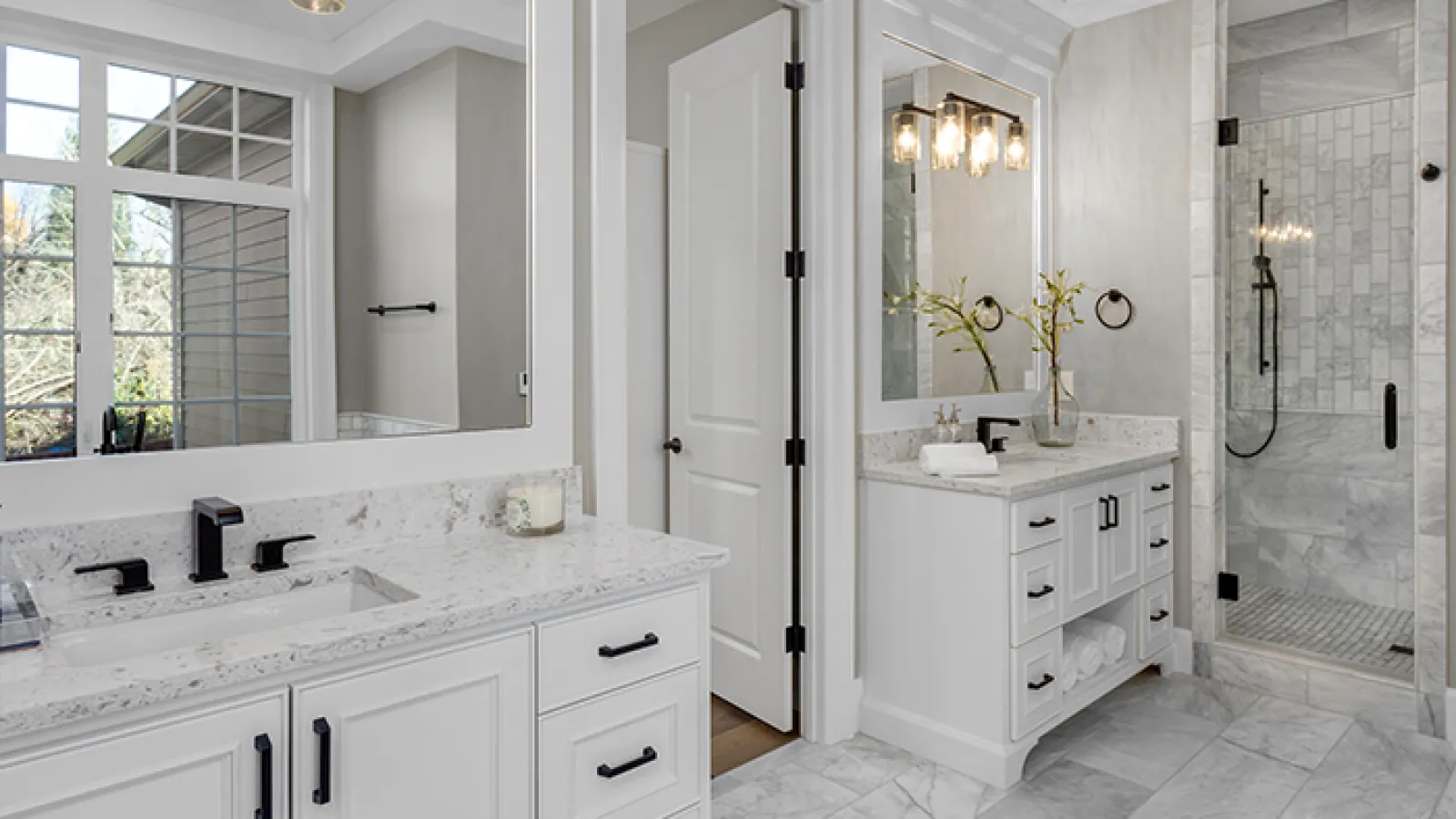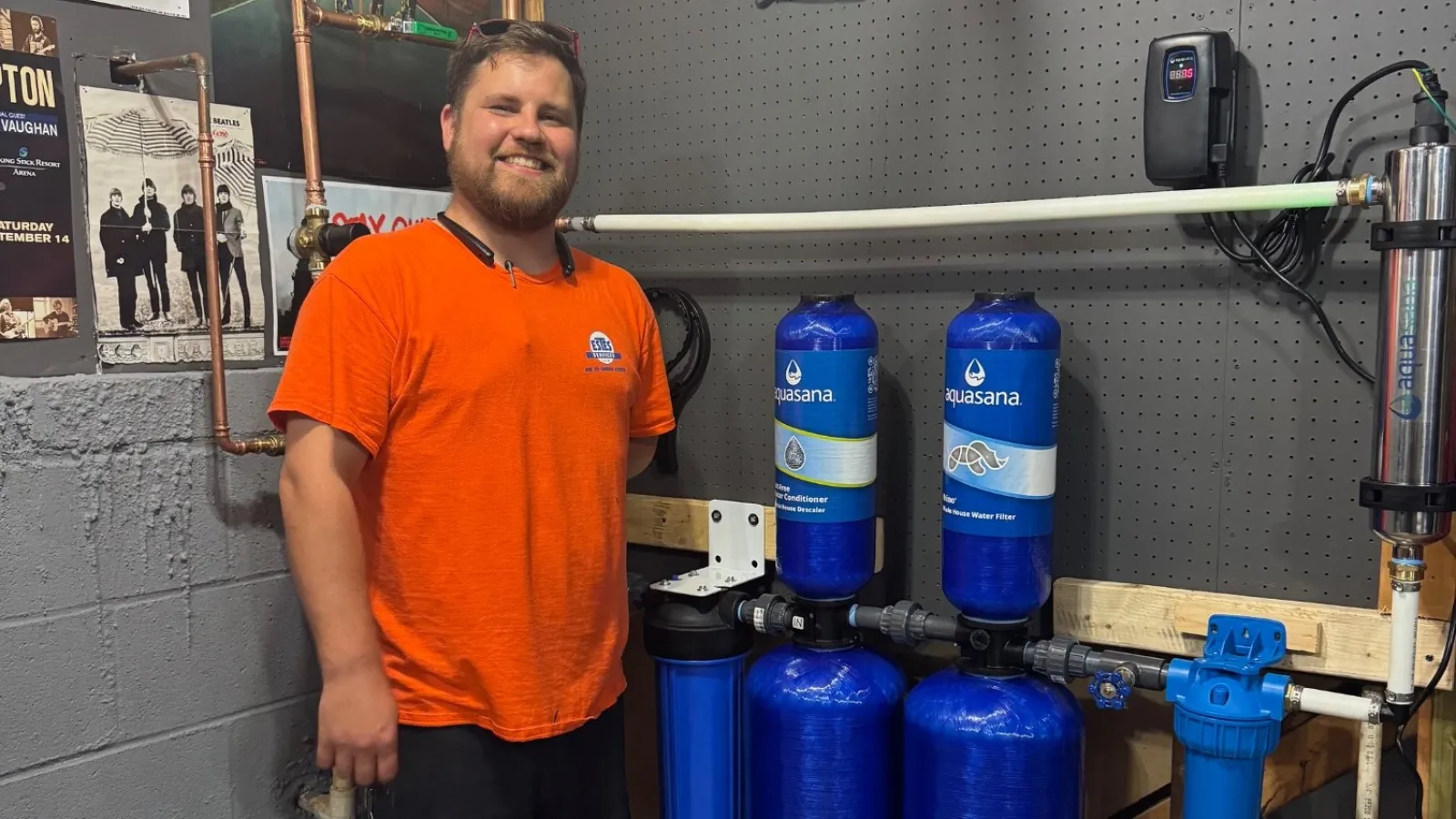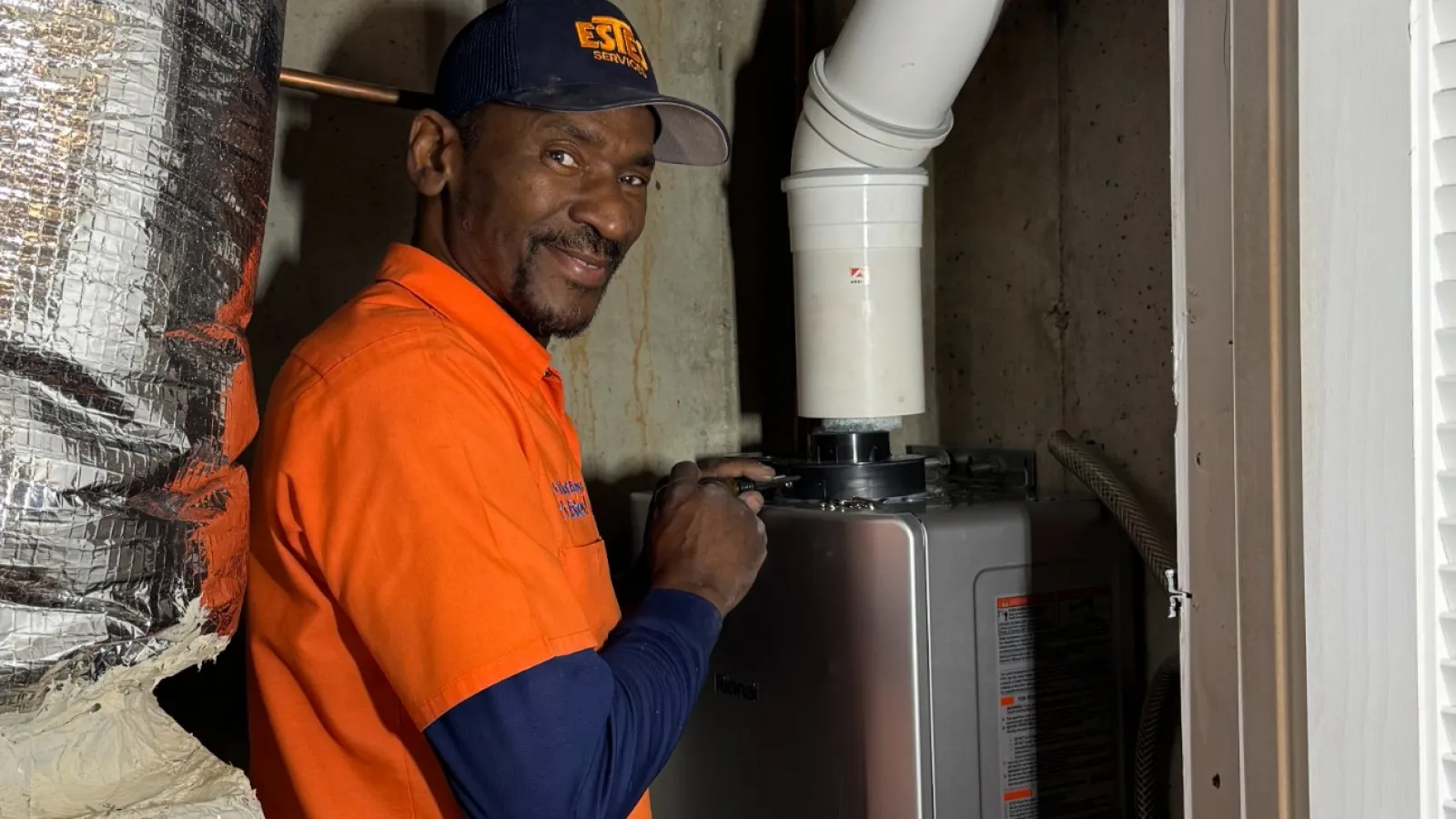Upgrading bathroom plumbing fixtures allows Atlanta homeowners to make aesthetic and functional improvements without the expense of remodeling or extensive renovations. While replacing older, outdated faucets and toilets will certainly give your spaces an updated look, doing so also creates value in the form of savings for your household. In our most recent blog, Estes Services shares how installing new fixtures in your bathrooms can generate savings now and for years to come!
New Bathroom Plumbing Fixtures Save Water
The Energy Policy Act of 1992 created the first national water-efficiency standards for bathroom plumbing fixtures, including showerheads, toilets, and sink faucets. When the Act went into effect in 1994, manufacturers were required to follow the standards for all newly manufactured products.
Before the Energy Policy Act went into effect, bathroom plumbing fixtures used far more water. Toilets made pre-1994 use an average of 3.5 gallons per flush, with fixtures made before 1982 using as much as 5 to 7 gallons per flush! Older showerheads have a flow rate of 4 to 5 gallons per minute, while bathroom sink faucets consume anywhere from 3 to 7 gallons per minute.
Current Water-Efficiency Standards
In the nearly 30 years since these standards were first set, revisions have been made to increase the efficiency of certain bathroom fixtures, and even recently, relax them. Today, these federal standards are as follows:
- Newly sold toilets must not use more than 1.6 gallons of water per flush (gpf).
- New faucets have a maximum flow rate of 2.2 gallons of water per minute (gpm).
- The flow rate of new showerheads must not exceed 2.5 gallons of water per minute.
States have also passed laws to increase water efficiency, such as Georgia’s Water Stewardship Act, which was enacted in 2010. The Act required local governments to enforce updated plumbing codes as of July 1, 2012, which requires the following water-efficiency standards for bathroom plumbing fixtures as well as requires newly installed fixtures to be WaterSense labeled:
- Single- and dual-flush toilets must not use more water than an average of 1.28 gallons per flush.
- Showerhead flow rates must be lower than 2.5 gallons per minute.
- Bathroom faucets must have flow rates under 1.5 gallons per minute.
Water-Efficient Bathroom Fixtures for Your Home
Bathroom plumbing fixtures such as sink faucets, toilets, and showerheads last a long time with proper care – anywhere from 15 to 20 years for a faucet and up to 50 years for a toilet! Because of their long service lives, older bathroom plumbing fixtures are still in use in numerous Atlanta homes built prior to 1994. If your fixtures have not been upgraded, your household consumes more water than necessary each day – upgrading to new water efficient bathroom plumbing fixtures offers significant savings!
Toilets
- Flushing toilets accounts for around 30 percent of the average household’s indoor water usage.
- Replacing an older toilet that uses 3.5 gpf with a new model that consumes only 1.6 gpf reduces water consumption by 54%.
- Switching from a 1.6-gpf toilet to a WaterSense-labeled toilet at 1.28 gpf further reduces water consumption by 20 percent.
- Replacing inefficient toilets stands to save your household almost 13,000 gallons of water each year, reducing annual water costs by more than $140.
Showerheads
- Showering accounts for about 17 percent of indoor water use in the average home, consuming almost 40 gallons of water each day.
- Upgrading an older showerhead to a model with a flow rate of 2.5 gpm can reduce water consumption by up to 50%.
- WaterSense showerheads have a flow rate of no more than 2 gpm – switching from a showerhead with the federally mandated flow rate of 2.5 gpm to one that uses 2 gpm can reduce water consumption another 20%, saving about 4 gallons of water from each shower.
- Switching to a water-efficient showerhead saves as much as 2,700 gallons of water each year.
- Low-flow showerheads also reduce hot water consumption, which allows your water heater to conserve fuel and lower gas or electric bills.
Sink Faucets
- Faucets throughout the home are responsible for approximately 15 percent of the household’s indoor water usage.
- Replacing old, inefficient bathroom sink faucets with new low-flow models saves the average household around 700 gallons of water each year.
- Upgrading from standard 2.2 gpm faucets to WaterSense faucets that use up to 1.5 gpm reduces water consumption approximately 30%.
- Installing aerators on bathroom faucets can further limit their flow rate, down to 0.5 gpm, which can reduce the water consumption of a WaterSense faucet as much as 66%!
Upgrade Your Fixtures for Savings with Estes Services
Bathroom plumbing fixtures are used numerous times each day, which means there are multiple daily opportunities to save money and water when you upgrade to more water-efficient models! The licensed Georgia plumbers of Estes Services help Atlanta homeowners select water smart bathroom plumbing fixtures for their homes, and we provide reliable installation services so you’ll know your new fixtures will perform as expected and aren’t wasting water through leaks caused by faulty installation.
Contact us today, and request an estimate to upgrade your bathroom plumbing fixtures.



